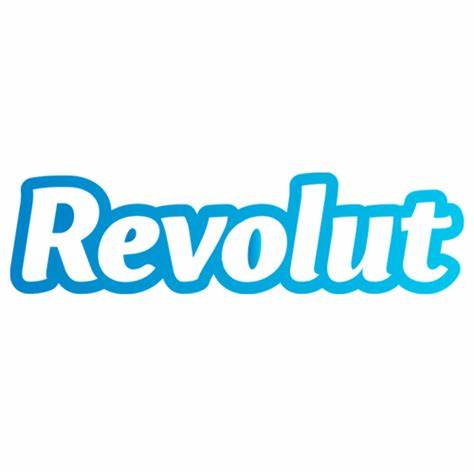Lead Bank’s fresh $70m round isn’t just another fintech raise. It’s a bet that vertical, compliance-first banking infrastructure—now extending to stablecoin cards—wins the post-BaaS winter.
Table of Contents
ToggleThe news — and why it matters
Lead Bank, a state-chartered lender whose roots go back to 1928, has raised $70 million at a $1.47 billion post-money valuation. New backers ICONIQ and Greycroft joined existing investors including a16z, Khosla Ventures, Ribbit, Coatue and Zeev Ventures. The bank says the capital will expand its balance sheet and client capacity for “the world’s top fintechs and digital asset companies.”
What lifts this beyond a routine funding headline is timing and model. After a bruising two years for sponsor-bank partnerships, regulators have pushed banks to own far more of the risk controls around third-party fintech programmes. Lead’s pitch is that it’s not middleware: it is the chartered system of record, with direct connections to Fedwire, ACH and RTP, and—crucially—now the bank behind Visa-issued, stablecoin-linked cards offered via Stripe’s Bridge platform, which is rolling out first across Latin America.
From Garden City to programmable banking
Lead began life in 1928 (as Garden City Bank), was re-founded as Lead Bank in 2010 and—after a 2022 acquisition led by former Square Capital head Jackie Reses—has been rebuilt to serve fintechs that need bank-level control and auditability. The bank highlights its ability to expose card issuing, payments, lending, deposits and stablecoin-linked accounts through a single, API-native platform that treats Lead as the transaction and compliance ledger of record.
That value proposition resonates with name-brand programmes. Ramp discloses that one of its U.S. cards is issued by Lead Bank, and trade press lists Affirm among current partners. Branch named Lead a strategic sponsor in July for its workforce-payments stack. These client signals matter: enterprise fintechs tend to consolidate around a small set of banks that can ship quickly without inviting supervisory headaches.

The post-BaaS winter backdrop
Why is “bank as platform” ascendant again? Because the old BaaS hub-and-spoke—one middleware layer fanning out to multiple sponsor banks—broke in painful, public ways. The Synapse bankruptcy froze or delayed access to funds for tens of thousands of end-users and forced messy, months-long reconciliations with partner banks such as Evolve. Supervisors followed with pointed guidance on bank–fintech arrangements and, in some cases, consent orders for banks whose third-party risk controls were judged inadequate. In short: if you run fintech programmes through a bank, the bank must truly be in charge.
Regulators also harmonised expectations via interagency third-party risk guidance (2023) and a 2024 joint statement focused on deposit products delivered with third parties. Banks that hard-wire compliance into their core systems—not just policies—now have the advantage.
Where stablecoins enter
The eye-catcher in Lead’s release is April’s Visa + Stripe Bridge launch: stablecoin-linked Visa cards that let users spend from a stablecoin balance while merchants receive fiat, starting in Argentina, Colombia, Ecuador, Mexico, Peru and Chile, with other regions to follow. Bridge, a Stripe company, handles the crypto-to-fiat orchestration; Lead Bank is the financial-institution partner on the programme. This is not speculative crypto: it’s card rails meeting fiat-backed tokens for everyday spend.
The macro context is helpful. Stablecoin activity keeps setting new marks in retail flows, and major payments networks are building public dashboards to track volumes and behaviour—evidence that this is moving from niche to mainstream. Europe’s MiCA regime, meanwhile, has already brought stablecoin issuers under prudential rules (since 30 June 2024), with full crypto-services coverage live from 30 December 2024. That regulatory clarity is pulling real programmes into production.
What Lead Bank is really selling
Speed without “compliance debt.” ICONIQ, a new investor, frames Lead as vertically integrated: the bank charter, payment-rail connectivity, automated controls/anomaly detection, and programmable compliance live in one place. That makes onboarding faster, and audits simpler, because the ledger, limits, watchlists and reconciliations sit in the same system. In hard terms, this can cut partner launch times and materially reduce examiner findings associated with fragmented tech stacks.
A stablecoin bridge that feels like cards. By standing behind Bridge’s card issuing, Lead gives developers a familiar acceptance model (Visa) while Bridge does the crypto plumbing. For consumers, the UX is ordinary—tap to pay; for regulators, the risk anchors in an FDIC-supervised bank that understands FIRREA-era control regimes and modern AML. That bank-of-record posture is the point.
Who gains, who loses
- Winners: Fintechs that need high-velocity issuing (virtual and physical), instant transfers, or compliant stablecoin off-/on-ramps—think spend management, payouts marketplaces, cross-border wallets. Ramp’s disclosure that its Visa Business Card is issued by Lead Bank underscores how card-centric platforms prize redundancy, speed and control.
- Also winners: Networks and large issuers experimenting with stablecoin settlement and tokenised money—programmes can ride the existing merchant footprint while a regulated bank handles fiat settling and consumer protection.
- Pressured: Middleware BaaS providers whose value was “many banks via one API.” After Synapse, fintech CFOs and risk chiefs are discounting abstraction layers that don’t carry the charter. Banks with consent-order baggage will likewise lose share until they rebuild controls and credibility.
The uncomfortable questions
1) Can a growth bank stay “boringly compliant” at scale? Lead closed this round at a valuation twenty-six times what Reses’ group reportedly paid to acquire the bank in 2022. High growth plus expanding partner rosters will test staffing, model governance, transaction monitoring and BAU reconciliation—areas where other BaaS banks have stumbled. Supervisors have made clear (again) that the bank must own the risk lifecycle; partner SLAs won’t save you.
2) Stablecoin risk transmission. Using cards to spend stablecoins masks some complexity. Bridge converts to fiat at auth/settlement; the merchant is insulated. But issuer liquidity, network outages and cross-border FX/AML frictions can surface elsewhere. Europe’s MiCA rules reduce legal uncertainty, yet the global fungibility of tokens creates scope for regulatory arbitrage if a coin circulates across jurisdictions with uneven safeguards. Programmes need hard cut-overs to compliant tokens by region and robust name-screening and source-of-funds checks at the on-/off-ramp.
3) Concentration and “who reconciles what?” The lesson from 2024–25 is that broken ledgers in multi-party stacks strand money. Lead’s sell is that keeping core reconciliation and anomaly detection inside the bank shrinks that failure surface. That’s a defensible moat—but only if internal controls and dual-party reconciliations with partners are boringly consistent under audit.
What to watch next (near-term diligence for operators and investors)
- KPIs: partner go-live velocity, average time-to-remediation for flagged anomalies, and batch break rates in settlement. These are the operational truths that separate platform banks from sponsor brands.
- Mix shift: If Ramp, Affirm and Branch scale on Lead, expect a rising share of card and lending revenue versus deposit NIM. That mix can be excellent—until credit cycles bite. Track partner concentration, off-balance-sheet exposures and loss-sharing waterfalls.
- Policy drift: If the U.S. moves toward stablecoin legislation akin to the EU’s clarity under MiCA, expect larger issuers and banks to accelerate card-plus-stablecoin hybrids—and more banks to copy Lead’s vertically integrated architecture.
Bottom line
After the BaaS winter, the market is rewarding banks that own the ledger, own the risk and ship fast. Lead Bank’s raise—and its role behind Visa/Stripe’s stablecoin-linked cards—is a marker that programmable, charter-centric infrastructure is where embedded finance is heading. The opportunity is large; so are the control obligations. If Lead executes, the market won’t just remember the valuation—it will remember that a nearly century-old bank showed how to modernise without outsourcing the hard parts.












